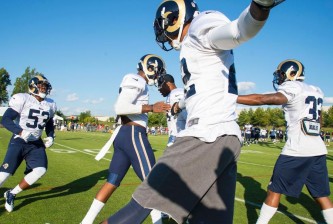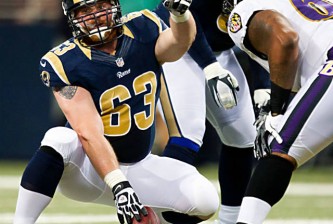
Public Enemy number one for NFL owners: not the players, not their agents, but the U.S. court system?
There hasn’t been much news to report in the ongoing stalemate in the NFL labor negotiations, and as fans get restless, George Atallah (executive spokesman for NFL players) is stepping into the breach. His latest post at NFLlockout.com offers to host a weekly Q&A session with all NFL fans. (Questions can be submitted via Twitter to @GeorgeAtallah).
The most pressing question: What is the timetable for returning players and owners to the negotiating table?
But as Judy Battista writes this week for the New York Times, that simple question has a long and complex answer, complicated by the decision by the union to decertify. But surprisingly, something other than money is emerging as a key factor in the process:
Getting a new deal that is not subject to oversight by the court — not just by Judge David S. Doty, who has often ruled against the N.F.L., but by any court — is as big a priority for many owners as reducing player costs.
How would that be possible? Only by both sides coming back to the table and settling their differences in the collective bargaining process. The catch is that the players would have to re-assemble as the NFLPA, losing all of the leverage that they gained through the court system.
The players have historically found refuge in the federal courts — Judge David Doty settled the landmark 1993 Reggie White vs NFL lawsuit, and that settlement led directly to the CBA that the league and its players have prospered under since then. However, since Doty’s ruling was the origin of the current CBA, any extension of that agreement also falls under the purview of the courts.
Now, the players look to Judge Susan Nelson for help. She is scheduled to rule on April 6th whether to “enjoin” the owners’ lockout. Or to put it another way, her ruling could force owners to start paying players again and resume “business as usual,” including free agency and the ability to trade players.
“How Judge Nelson decides the fundamental issue, which is whether or not to enjoin the lockout, is going to affect enormously the collective bargaining leverage on both sides,” said Gary Roberts, the dean of the Indiana University School of Law in Indianapolis. “However she rules is going to set the table for negotiations that, I’m convinced, will lead to an agreement sometime in late summer.”
— Washington Post: Judge Susan Nelson has a reuptation as a master mediator.
However, because the wheels of justice are anything but swift, nothing says she has to rule next week. In fact, the owners have been petitioning her to delay her ruling.
Why? Because they have their own lawsuit before the National Labor Relations Board, hoping to have the NFLPA’s decertification ruled a “sham.” That ruling would effectively kneecap the players’ entire negotiation strategy, forcing them back to the negotiating table with their tails between their legs.
One interesting wrinkle here: Judge Nelson may prefer not to rule at all, instead holding the threat of a damaging ruling over the heads of both parties as a Sword of Damocles, while acting as a master mediator to get both players and owners to resolve their differences, and usher them back to the collective bargaining process.
Roberts said Nelson also could try to come up with a “clever ruling” intended to bruise both sides in a calculated attempt to shepherd everyone back to negotiations, which, unless the litigation were withdrawn, would take place with her guidance.
However it shakes out, next week might be the first time we see some progress in this ongoing standoff.
Tip of the cap to George Atallah, who forwarded me the link to Judy Battista’s article.






















